When we plan that special international trip, we hope (and pray!) for easy airline flights, great weather and, of course, good health for ourselves and our travel partners. Sightseeing is no fun when you’re feeling crummy & sick!
There are some important steps that you can do to maximize your chances of staying healthy on your upcoming adventure. However, the level of preparation and medical diligence when traveling abroad will greatly depend upon your destination and type of travel.
For example, are you going to Europe on a tour where the country has a good healthcare system and you can safely drink the water? Or are you planning a trip to a more developing country (like some in Africa, South America, or Asia) where you’ll need to up your travel safety game.
Why This “Staying Healthy” Blog Post
This is a subject near & dear to my heart. First, because I have traveled extensively, including to many developing countries which were often my favorite places! And secondly, because I am a Registered Nurse (with prior emergency department and currently, community health experience). So, I approach this subject from both perspectives.
I recently returned from a wonderful 2-week tour of West Africa, where I definitely practiced greater travel safety, including drinking only bottled water. Also, I had to get some of the more “exotic” vaccines like yellow fever and typhoid. And, yes, the trip was so worth it!
In this blog post, I will give you lots of tips and practical information & break down some of the “travel medicine” subjects. That way, you can make informed decisions when planning your next international trip.
Here’s the topics we’ll cover:
- Preparing for Your Overseas Travel
- Routine & Travel Vaccines
- Travel Clinics & Travel Health Specialists
- Traveler’s Diarrhea
- Pharmacy Travel Kit
- Yellow Fever & the YF Vaccine
- Malaria – Prevention & Anti-Malarials
- Travel Insurance – Emergency Medical Coverage
- Travel Health Resources
Preparing for Your Overseas Trip
Here are some general steps to take before your next foreign travel:
Check the CDC “Traveler’s Health” website for their recommendations for the countries you’ll be visiting – to get an idea of what vaccines might be required and/or recommended.
- The Centers for Disease Control and Prevention (CDC) recommends meeting with a health care provider 4 to 6 weeks ahead of your trip to allow adequate time to prepare. One reason is that many travel vaccines require two weeks to take full effect.
- If your trip is to one of the more “exotic destinations,” you may want to schedule an appointment at a travel medicine clinic (see that section) for a consultation.
- If that’s not necessary, have a medical checkup with your primary care provider at least 6 weeks before your trip – in case you need med refills and/or routine vaccines like tetanus.
- Allow time to pick up any necessary medications, both prescription and over-the-counter meds.
Routine & Travel Vaccines
For any of your travels abroad, it’s always a good idea to make sure you’re up to date on your routine vaccines. For example, you don’t want to worry about finding a healthcare provider to get a tetanus shot if you accidentally cut yourself on the trip.
I know vaccine recommendations can be a bit confusing and/or open to some varied interpretation, depending on your personal medical history and prior vaccine status. So, you’ll want to work with your primary healthcare provider or a travel medicine expert to help you decide what you really need for the trip.
Types of Vaccines:
- Routine vaccines are those recommended for everyone in the U.S. based on their age, health condition, or other risk factors. These include the childhood vaccines we all got before starting school. Some are also routinely recommended for adults, like the annual flu vaccine or a tetanus booster.
- A required vaccine is one that travelers MUST have in order to enter a country, based on that country’s regulations. Yellow fever, meningococcal, and polio vaccines may be required by certain countries.
- Recommended vaccines are those the CDC recommends travelers get to protect themselves from illnesses that are usually travel-related. For example, the typhoid vaccine can prevent typhoid, a serious disease not usually found in the United States.
Here’s a List of Routine Vaccines:
- MMR (measles, mumps, rubella) – given to those without evidence of immunity (from titers) and/or born after 1957.
- Tetanus – a booster dose can be given every 5 years for international travel (normally given every 10 years). Tdap vaccine is tetanus, diphtheria, pertussis. Td is tetanus & diphtheria.
- Polio – a single, lifetime booster dose. Sadly, polio is reemerging in certain parts of the world, including one case (not travel-related) in the U.S. in 2022 in an unvaccinated man.
- Varicella (chicken pox) – for the unvaccinated who have not had chickenpox.
- Shingles vaccine – for ages 50+ (Shingrix is the newer vaccine name)
- Pneumococcal (pneumonia) – for ages 65+ (various types, newest is Prevnar-20)
- Flu shot (for the current flu season – September to June)
- Covid Vaccine – the latest booster (currently Moderna or Pfizer Bivalent)
List of Common Travel Vaccines (required and/or recommended, depending on the country):
- Hepatitis A – transmitted by contaminated food & water. Recommended for all travelers to regions throughout the world. Vaccine is 2 doses & lasts 20+ years or possibly a lifetime.
- Typhoid Fever – transmitted by contaminated food & water. Choice of two different types: the oral vaccine lasts 5 years while the injection lasts just 2 years. I recently took the oral vaccine – Vivotif – which is 4 pills on days 1,3,5, and 7.
- Hepatitis B – transmitted by blood & bodily fluids. New CDC recommendation (in 2022) is for universal Hep B vaccination for adults. The newest adult vaccine (HEPLISAV-B) is 2 doses (instead of 3 doses).
- Meningococcal Meningitis (MCV4) vaccine – a single dose injection (like Menactra or MenQuadfi).
- Cholera – transmitted by contaminated food & water. The oral vaccine is a single dose.
- Yellow Fever – transmitted from a mosquito bite (see separate section). The vaccine is a single dose injection.
Travel Clinics & Travel Health Specialists
Over the years, I’ve made appointments at “Travel Clinics” whenever I was planning travel to “more exotic” countries (like in Africa, Asia & South America) vs. a trip to Europe. I wanted “experienced” consultations by specially trained travel nurses to help me know which vaccines and/or medications (such as malaria pills or antibiotics) were needed for my particular trip.
Travel specialists have access to the latest information from the CDC, World Health Organization (WHO), and other world health surveillance sources who constantly monitor outbreaks & other health hazards. Thus, they’re able to discuss health recommendations, as well as medical or vaccine requirements specific to the countries on your itinerary.
These recommendations depend on a wide variety of factors – including your length of stay, travel accommodations (5-star resort vs hostel), urban or rural travel, time of year (rainy or dry season), current outbreaks, your personal medical history, and more. As a result, travel clinic staff can help you sort through CDC’s “blanket recommendations” and provide you with a more customized “risk assessment” for your trip.
Travel Clinics
Since 2010, I’ve been using Passport Health (with offices in San Diego) which provides travel consultations, travel vaccines, and travel supplies. Currently, they are one of the largest providers of travel medicine services with travel clinics throughout the United States. Passport Health has a good website with good travel health & vaccine information.
Some friends & fellow travelers have been able to book appointments at Travel Clinics through their healthcare systems (like Kaiser). In addition, CVS Pharmacy offers Pre-Travel Consultations through their wide network of in-store CVS Minute Clinics.
Traveling with friends, I have also found that everyone has a different level of “risk tolerance.” Some people (like me!) get all recommended vaccines & medications and others will get none (unless required for entry). It’s ultimately a personal decision – but you want to be well-informed.
Costs of Travel Vaccines & Meds
While plans vary, many insurance providers do NOT cover travel vaccines under standard policies – even if administered by a family doctor. So, it’s best to verify coverage with your particular insurance. For example, Passport Health does not accept insurance directly but can provide you with a receipt for submitting a claim to your insurance.
Important Note: Medicare does NOT cover any vaccines or medicines for foreign travel – although they do cover many routine vaccinations (like shingles, flu, Hep B). Over the years, I have usually been a “self-pay” for these travel services.
Lastly, there can be a significant difference in the cost of the different vaccines & medications (such as malaria pills) between the different providers and pharmacies, so you may want to do some research ahead and compare costs.
Traveler’s Diarrhea & Gastrointestinal (GI) Illness

The CDC states that “attack rates” of TD range from 30% to 70% of travelers, depending on the destination and season of travel. The most common TD symptoms are passing three or more loose stools in a 24-hour period, an urgent need to defecate, abdominal (stomach) cramps, fever and/or vomiting. NOT FUN!
Classifications of Severity of Traveler’s Diarrhea
- Mild (acute): diarrhea that is tolerable, is not distressing, and does not interfere with planned activities.
- Moderate (acute): diarrhea that is distressing or interferes with planned activities.
- Severe (acute): diarrhea that is incapacitating or completely prevents planned activities; all dysentery is considered severe.
Poor hygiene practice in local restaurants is likely the largest contributor to the risk for TD. The majority of cases are caused by bacteria. Commonly known as “food poisoning,” the illness comes from the ingestion of preformed toxins in food. Vomiting and diarrhea may both be present, but symptoms usually resolve spontaneously within 12 hours.
How To Prevent TD
Per the CDC: Traditionally, it was thought that Traveler’s Diarrhea could be prevented by following simple recommendations such as “boil it, cook it, peel it, or forget it,” but recent studies have found that people who follow these rules may still become ill.
Regardless of whether you’re someone with an overly sensitive GI system or one with an “iron tank” of a stomach, there are certain common-sense precautions to follow when traveling in “higher risk” countries where it’s not safe to drink the local water.
Common Recommendations for Avoiding TD in Higher Risk Countries:
-
Only drink bottled or purified water, even when brushing your teeth.
- Inspect each bottled water you buy to make sure the cap is sealed properly.
- Bottled drinks & juices – and hot drinks that have been boiled – are safe to drink.
- Careful with ice in your drinks – make sure the ice has been made with purified water.
- Carry a bandanna to dry the tops of bottled drinks before and after opening, and for cleaning wet utensils or plates.
- Eat foods that are cooked well and served hot.
- Avoid fresh veggies or fruits – in particular, that includes lettuce in salads (because they’ve likely been washed in local tap water).
- Be careful with food sold from street vendors. (However, check out the good article below)
- Wash your hands often and/or use hand sanitizer.
Here’s a good article by “Nomadic Foodist” to help you better discern when it’s safe to eat street food: 10 Rules: How To Eat Street Food Without Getting Sick.
How To Treat Traveler’s Diarrhea / GI Illness
No matter your destination, make sure to bring along a “TD Kit” with the following medications – Pepto Bismol, Imodium (loperamide), and an antibiotic like Zithromax. You might also consider bringing packets of oral hydration powders. Here’s more details…
Pepto-Bismol – “The Pink Stuff”
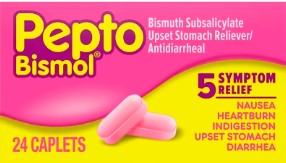
Be advised that BSS commonly causes black stools & a black, hairy tongue – and may cause nausea, constipation, and rarely tinnitus (ringing in the ears). Luckily, the “black side effects” are temporary & harmless.
In addition, there is solid evidence that taking “Prophylactic Pepto” reduces a traveler’s chances of getting TD by up to 60%. One expert in this good Frommers article stated that she takes 2 tabs of Pepto-Bismol twice daily when she goes into a “risky” situation. In fact, I did just this when I traveled to India & Nepal in 2006 – and I think it really helped!
If you’d like to more know, here’s the Pepto-Bismol website.
Imodium (loperamide)
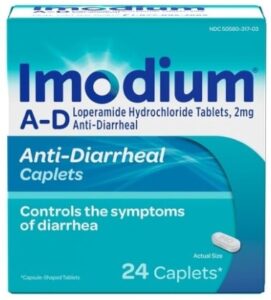
Both medications are synthetic opiates & work to slow the movement of your intestines (anti-motility). They also provide prompt but temporary relief by reducing muscle spasms in your gastrointestinal tract. The frequency of bowel movements is usually reduced, enabling travelers to “more safely” ride on a bus or airplane (instead of being stuck in your hotel room near a toilet!).
Lomotil, which may cause more drowsiness, is now considered a controlled substance and needs a prescription. As a result, the preferred med for TD is Imodium (loperamide) because it’s widely available over-the-counter. The directions for taking Imodium A-D are 2 caplets after the first loose stool. Then, 1 caplet after each subsequent loose stool, but no more than 4 caplets in 24 hours.
Oral Rehydration

You can add a couple oral replacement packets to your travel med kit and/or visit a local pharmacy when abroad. A friend recently recommended Nuun company’s Rapid Hydration product – a packet that you can add to 16 ounces of water to help replace electrolytes, vitamins and minerals. Their website has a good article on the Warning Signs of Dehydration.
Antibiotics
The last item for your TD med kit is an antibiotic for traveler’s diarrhea, as prescribed by your primary care provider or travel clinic. There appears to be a benefit of using prompt, early “self-treatment” with antibiotics when moderate to severe TD occurs. In most cases, the antibiotic helps shorten the duration of illness to 6–24 hours.
These days, Zithromax (azithromycin), also known as a Z-Pak, is the most commonly prescribed med for TD. In addition, azithromycin can be used to treat a variety of bacterial infections – such as a urinary tract infection (UTI) or bacterial type bronchitis you might develop on your travels. In the recent past, Cipro (ciprofloxacin) was prescribed for travelers, but not as much anymore.
If you’d still like to know more about Traveler’s Diarrhea, here’s the CDC Yellow Book website on the subject.
Probiotics
Lastly, I like to take Probiotics on “high risk” trips to help fortify my GI tract with “friendly bacteria.” I start taking them 2-3 weeks before the trip, during the trip, and then for 1-2 weeks post-trip.
Pharmacy Travel Kit

As you might imagine, I travel with a fairly complete Pharmacy Travel Kit. Being a nurse, I like to be prepared for whatever health needs might pop up for me or my travel mates – and not have to search out a local pharmacy late at night!
Not surprisingly, for my recent West Africa trip, I took my full kit. For my upcoming Europe trip, I can pare down my list, knowing that I can easily get replacements for non-prescription OTC meds.
Here are some Common Tips for Travel with Medications:
- Always pack medications in your carry-on bag to avoid loss and to have them handy – very, very important!
- Make sure you bring extra doses of important medications (like for diabetes) in case your travel home is delayed.
- Bring copies of important prescriptions, written using the generic drug name rather than a brand name to be prepared for any unforeseen loss of your medications.
- Keep medicines in their original, labeled containers for a quicker security screen at the airport and a better experience if you get stopped by customs while overseas. (However, see the next section for my ‘disclaimer” where I break this rule!)
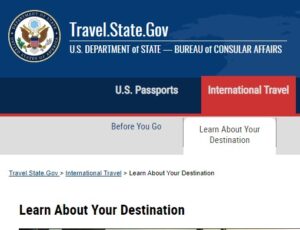
To be honest, I was not aware of this “medication restriction” issue until I traveled to Dubai & the United Arab Emirates (UAE) in 2012. Before the trip, I learned some of my hormone replacement meds were on their prohibited list. So, I asked my GYN doctor to write a letter stating this medication was prescribed by her.
Luckily, I never had to show the letter or medication to anyone at customs, but better to be safe than sorry. I doubt this issue happens in most countries but it’s always good to check, especially for more “exotic” destinations and/or places with strict local laws.
My Travel Pharmacy Bag
With the many different medications I take with me on my trips, I don’t have the space to bring all the original pill bottles. So, contrary to the advice above, I put most of my meds into small ziplock baggies and/or 3×3 clear plastic packets created for pills. I clearly label each one with the med name and dosage. I also have written up a separate list of all my travel medications with directions on how to take them (since the packaging has been left behind).

- All prescription medications and daily OTC meds
- The TD/GI meds – Pepto-Bismol, Imodium, probiotics, oral rehydration packet
- Antibiotic – like Zithromax
- Sleeping Pills / other sleep agents (like melatonin)
- Daily Vitamins
- Pain / fever / anti-inflammatory meds – like acetaminophen, ibuprofen, or aspirin
- Your favorite “immune boosters” – such as Airborne
- Other GI meds – like anti-gas, antacids
- Laxatives for constipation – like bisacodyl pills and/or dried prunes (they work great)!
- Your favorite meds for respiratory coughs & colds – such as decongestants, cough suppressants, expectorants
- Antihistamines for allergies or allergic reactions – like Benadryl (diphenhydramine) or Zyrtec and Claritin (causing less drowsiness)
- Eye drops – lubricating and/or for eye irritation
- For women – yeast infection meds
- Antibiotic ointment (like Neosporin) for wound & first aid care
- Cortisone topical cream – for skin irritation or rashes
- Meds for motion sickness or sea sickness (if that might be an issue)
You can also check out CDC’s very helpful “Pack for a Healthy Trip” Checklist.
Yellow Fever
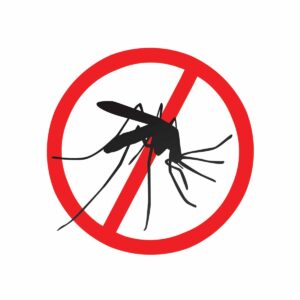
Most individuals who contract yellow fever will show no symptoms. Some may have mild symptoms like fever, chills, headache or vomiting. However, the CDC estimates that one in every seven people who show any symptoms will develop a severe case of yellow fever. And between 30 and 60 percent of those individuals who have severe symptoms will die from the virus. Okay, you got my attention!
Because of the potential for severe illness, the CDC recommends yellow fever vaccination for travelers going to countries where there is a risk of the disease. In addition, some countries require arriving travelers to show proof of yellow fever vaccination. This was true on my recent West Africa trip to Ghana, Togo & Benin.
Click here for the CDC Yellow Fever website page.
Yellow Fever Vaccine
For most people, a single dose of the yellow fever vaccine provides long-lasting protection, so a booster dose of the vaccine is not needed. However, travelers going to areas with ongoing outbreaks may consider getting a booster dose of the vaccine if it has been 10 years or more since they were last vaccinated.
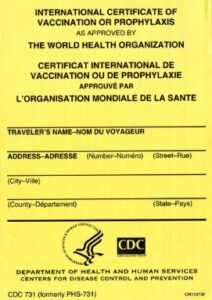
The vaccine must be administered at certified yellow fever vaccination centers and medical facilities, such as travel clinics. Patients will be given the World Health Organization (WHO)-approved International Certificate of Vaccination or Prophylaxis (known as the “yellow card”). The nurse will write the yellow fever vaccine information on the card & stamp it with their official stamp. The Yellow Card is kept with your passport as you travel, serving as a “medical passport” of sorts.
My West Africa trip fell 11 years after receiving my last Yellow Fever vaccine. Due to the risk of yellow fever there, I decided to play it safe and get another vaccine at my travel clinic. I will warn you that the Yellow Fever vaccine is NOT cheap. It cost me $375! But prices can vary widely – I saw one listed on a San Francisco public health department travel clinic web site for $215.
Malaria
Okay, while we’re on the subject of those nasty mosquito-borne diseases, let’s talk about Malaria – another important topic for international travelers to tropical regions. Malaria is a disease caused by a parasite. Mosquitoes spread the parasite to people when they bite them. In fact, a single mosquito bite is all it takes for someone to become infected! Yikes!
Malaria is one of the deadliest infections in the world. Globally, more than 215 million cases of malaria are reported each year with more than 400,000 deaths.
Generally, the disease is most common in warmer areas near the equator. Malaria is commonly found in Africa, Southern Asia, Central & South America, parts of the Caribbean, Eastern Europe, and the South Pacific. About 2,000 cases of malaria are diagnosed in the United States annually, mostly among returned travelers.
Malaria symptoms usually appear within 7 to 30 days but can take up to one year to develop. Malaria causes high fever, shaking chills, flu-like illness, and muscle pain. Without treatment, it can cause severe illness and death.
Click here for the CDC Malaria website page.
Prevention of Malaria

Ways to Prevent Mosquito Bites:
- Wear long-sleeved shirts and long pants (especially between dusk and dawn).
- Use insect repellent – with either DEET or Picaridin
- Apply sunscreen first, wait 10 min, then put repellant on exposed areas of your skin.
- Do not apply to your forehead, because when you sweat, it could drip into your eyes.
- Avoid areas where mosquitoes may be more prevalent.
- Sleep in a mosquito-free setting and/or use a mosquito bed net.
- Consider treating clothing and gear with permethrin.
Anti-Malarial Medications
A variety of anti-malarial medications are available. These malaria pills prevent the malaria parasite from taking root in the body. However, no antimalarial drug is 100% protective so you must practice the strategies listed above. Due to drug resistance and differences in malaria strains in the different regions, a travel health specialist can help identify the best medication for your trip – and discuss their pros and cons.
For my West Africa trip, two common medications deemed effective for that region were Malarone (Atovaquone-proguanil) and Doxycycline. Like many parts of the world, resistance to Chloroquine has been documented so this med (once commonly prescribed) is not used.
Over the years, I have usually taken Malarone for malaria prevention and done well with it. However, it can cause stomach upset in some people. Malarone is a daily pill, started 1-2 days before travel to the infected area, then taken daily, and continuing for 7 consecutive days after leaving the area.
Malarone can be expensive, so you’ll want to shop around for the best price. This time, I used a Good Rx coupon to get 28 tablets for $47. These meds may not be covered by insurance – in my case, they were not covered by my Medicare plan.
Check out Passport Travel’s webpage on Malaria Prevention and Antimalarials for Travelers.
Travel Insurance – Emergency Medical & Medical Evacuation
Whenever you travel abroad, all kinds of unexpected medical issues (both injuries & illnesses) could possibly happen to you or your travel partner. Even if you’re both the picture of health, one of you could take a bad fall or develop appendicitis, requiring surgery at a local hospital. Life Happens…
Personally, I buy some type of travel insurance for all my international trips, including to Europe. Even if I don’t purchase a “full travel policy” (which is often!), I always get one covering emergency medical & medical evacuation. As mentioned, I was formerly an Emergency Room nurse!
Here’s the Two Types of Travel Medical Coverage:
Emergency Medical & Dental — This pays for the cost of treatment (hospital or doctor) associated with a medical or dental emergency (unexpected illness or injury) incurred while traveling. This coverage may be secondary to your primary health insurance (if you have it).
- Medical Evacuation Insurance – covers the cost of transporting you to a medical facility where you can receive appropriate medical treatment in the event of an emergency. It might also mean transport back to your home hospital, if deemed necessary. In a worst-case scenario, this can mean a medically equipped — and incredibly expensive — private jet (possibly with a nurse accompanying you).
The costs of medical evacuation can be outrageously expensive – potentially exceeding $100,000! A Florida travel agent recalled a client who had to be evacuated from a transatlantic cruise. The cost was $80,000 – only $25,000 of which was covered by his insurance. Ouch…
Surprisingly, these “medically focused” travel policies are not that expensive. My recent West Africa travel insurance (bought through the SquareMouth broker website) cost $112. That was for $100,000 of Emergency Medical coverage and $1 million for Medical Evacuation & Repatriation.
I’ve written a detailed article on this important & complex subject – DeMystifying Travel Insurance: What You Really Need to Know – so please check that out if you’d like to know more.
International Travel Health Resources
I know this has been a long article, but I hope you have gotten some useful and important information for keeping yourself healthy & safe on your international travels.

- CDC Website – Traveler’s Health
- CDC Website – Advice for Travelers
- CDC Website – Travel Health Kit Checklist
- Website – Passport Health
HAPPY & HEALTHY INTERNATIONAL TRAVELS !!












Hi Janet! I don’t always get around to reading your newsletter (and it’s been eons since I’ve seen you), but I’ve got a couple trips coming up and found much of your info really great, especially with the accompanying links. Thanks for those and all your travel wisdom. Enjoy the Camino (again)!
Thank you, Janey & you’re most welcome. I’m so glad you found the information helpful! International travel is wonderful, yet there are so many considerations in ensuring a safe & healthy trip! Happy Travels…